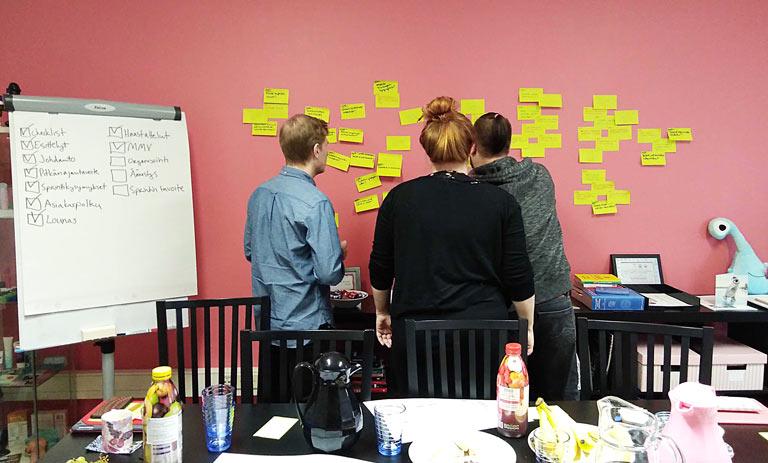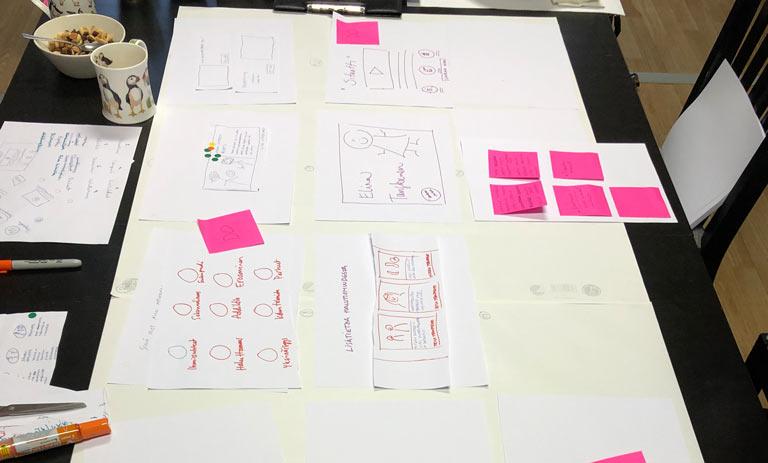Sexpo – New therapy site was created in a design sprint
We designed a new therapy booking site for Sexpo in close contact with the client. During a one-week design sprint we created a functional prototype that was tested with real users and laid the foundations for the new web service.
Sexpo has promoted sexual well-being in Finland since 1969. The organization offers education, sexual counseling, and relationship therapy, to name but a few of their services.
Our collaboration with Sexpo expanded from website redesign to designing a completely new therapy booking website. Sexpo wanted to increase the number of sexual and relationship therapy appointments by creating a separate booking site. The main goal of the new site was to be clear and easy to use.
Why choose design sprint – a rapid and concrete solution
In the Google Ventures design sprint, a prototype of the new product is created in one week. The prototype then goes through user testing before the product gets its finishing touches. To Sexpo, the therapy website is a step into the unknown and a big investment. A design sprint that involved their experts from day one was a great way to define the big picture and get concrete solutions fast.
According to Tiina Vilponen Head of Communications and Marketing at Sexpo, the organization prefers doing things fast:
“Schedule reasons were behind the design sprint method. We got all the key employees working in the same room, at the same time, and without interruptions. The sprint method served us well. With a concrete method and plan we got the desired results during the sprint week. With Paper Planes, everything ran smoothly and we got professional instructions for everything. The sprint week was demanding, but rewarding as well,” says Vilponen.

Paper Planes facilitated the project and was responsible for visual design. Sexpo’s professionals created a plan for the service, which was then validated by two experts, both sexual and relationship therapists. The close collaboration model of the design sprint sped up the design phase and made it possible to find bold solutions without breaking the consensus.
We did all this in the five-day sprint
Day 1:
We defined the problem that needed solving. We had to make booking a sexual or relationship therapy appointment more approachable. First, we outlined the customer journeys. Then we defined the journeys’ key points so that we can affect them through the new service.
Day 2:
We mapped out already existing solutions through benchmarking. By working individually, we created four drafts of the service. Each draft was aimed at making booking and finding the right kind of help approachable and smooth.
Day 3:
We went through the drafts with a decision-making exercise. We chose our favorite elements and glued them to a shared storyboard to assemble a draft of the website prototype.
Day 4:
We built the actual prototype. Paper Planes coordinated the building process and the visual design. Sexpo participated by creating new content, among other things – text, videos, and pictures. In addition to creating new content, we also utilized existing Sexpo material. The prototype was built in InVision while Sketch was used for the layout.
Day 5:
The test users tested the therapy site prototype under supervision and gave feedback on using the service. At the end of the day, we knew what worked and what didn’t. It gave us tools to modify the prototype.

The sprint method works
In a sprint, the service is built step by step through mutual choices. When you’re sitting around the same table, the vision stays clear over the whole project. The information architecture was validated together with Sexpo’s staff, so all comments were available instantly. Adding end user testing and modifications at the end of the sprint validated the choices made during the week and made the final design phase simple.
“A website project doesn’t always have to be long and complex. You can finish the design phase in a week. During the sprint, we built a new website while being fully informed of all the concrete steps of the process. The test users gave us instant feedback on the site and its performance – both structure-wise and content-wise,” Vilponen describes.
During the sprint, we made bold choices. In a normal website project, the ideas we got probably wouldn’t have emerged or would have been discarded as too experimental. It was easy to test wild ideas when you knew you would get to edit the prototype based on the feedback from the user testing.
After the design sprint, Paper Planes and Sexpo continued to work together with the finishing of the prototype, coding, and publishing the site.
Take a closer look at the service and book an appointment for a therapy session at ihmissuhdeterapia.fi